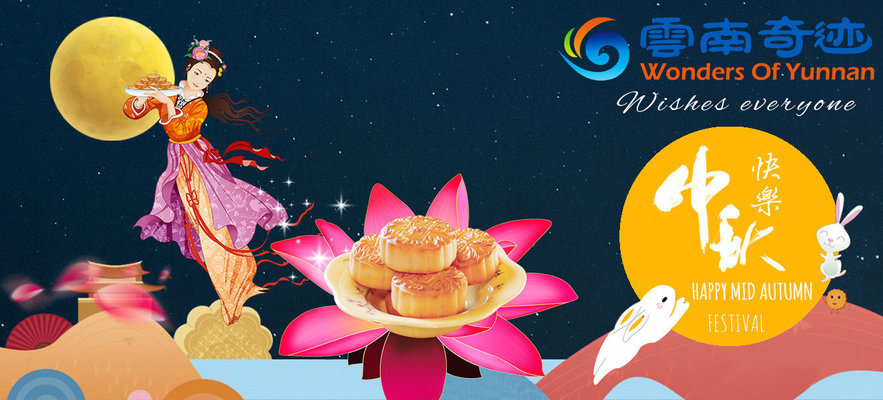This year on Friday September the 13th 2019, people in China will be spending time with their family and stuffing themselves with mooncakes. It is almost Mid-Autumn Festival, one of China's biggest national holidays. Offices, shops and schools will be closed this day, so too our Wonders of Yunnan office. So what is this holiday all about?

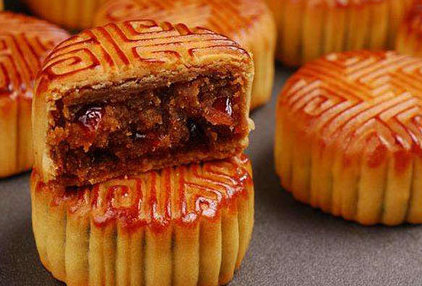
Around Mid-autumn festival, mooncakes are gifted to relatives or friends in overpriced and extravagant boxes
When travelling in China during September, there might be a chance that you will receive a luxurious and mysterious looking box from your Chinese host, tour guide or new friend as a gift. When you open it, you will find some smaller boxes, each containing a single cake. You might be excited by the look of them, some look simple and others have pretty patterns, and if you are lucky, you got some with a surprising and flavoursome filling. When you are less lucky, the filling isn’t much up to your liking, in which case, you now have a great present to give to your next host or tour guide.
It is almost Mid-Autumn Festival, and you just received your first mooncakes. Mid-Autumn Festival, which also goes by Moon Festival and 中秋节 Zhongqui Jie in Chinese (which literally means mid-autumn festival), is celebrated in China and other East Asian countries on the 15th day of the 8th month of the Lunar Calendar. It is believed that on that date the full moon is strongest and brightest. From origin, the Mid-Autumn festival was a harvest festival, where offerings were made to the moon deity to pray for a prosperous harvest.
Mooncakes are given to family members, colleagues, friend or guests around the Mid-Autumn Festival, Those fancy box of cakes can cost up to a few hundreds of RMB for two handfull of cakes, but you can also buy (possibly less tasty) cakes per piece in simple packaging for from 5 RMB and up in the supermarket or special mooncake markets that pop up during this time. Most cakes are high in fat and sugar and thus very heavy on the stomach, and it is best to eat them with moderation as some of them contain more calories than a Big Mac each. Many Chinese cut them into pieces and share them with others during tea time. Each region in China has its own speciality of flavours, here are a few popular ones:
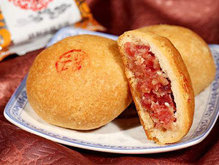 Yunnan-style Ham Mooncakes
Yunnan-style Ham Mooncakes
Called 云腿月饼, Yuntui Yuebing in Chinese (translated “cloud ham mooncake”), the speciality in Yunnan contains sweetened ham and are with a thick crust that can be either oily or a bit dry. I personally do not like them, and many westerners have trouble getting used to the taste, but locals in Yunnan love them. You have to try to know!
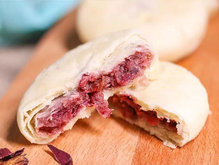 Yunnan-style Flower Mooncakes
Yunnan-style Flower Mooncakes
Luckily for those who cannot get used to the sweet and salty flavour and crumbly crust of the ham cakes, mooncakes with rose filling wrapped in soft thin layers are also popular in Yunnan. As Yunnan has a great climate for growing flowers, you will find these everywhere too. They are soft on the tongue and sweet and a bit sour.
 Cantonese- style mooncakes
Cantonese- style mooncakes
Guangdong and Hong Kong are also famous for their popular and wide variety of mooncake and you can find many different types per region. A famous mooncake style is with a paste made of lotus seeds, melon seeds, red beans or nuts and salted (duck) egg yolk. In Shanghai, you can find the same style mooncakes. In recent years, you can find many new types of mooncakes, such as chocolate, matcha, mango or ice cream among many others.
 Beijing-style mooncakes
Beijing-style mooncakes
With an imperial history, Beijing has a rich selection of mooncakes that used to be served at court. One of the most popular types of mooncakes is the red mooncake (自来红月饼, Zilaihong Yuebing, translated Naturally Red Mooncakes), often filled with brown sugar, Osmanthus blossoms, fruit shreds, walnuts or sunflower seeds. Another popular mooncake style is the Fanmao mooncake (翻毛月饼, flipping feather mooncake), which is made of five nuts or hawthorn fruit, walnuts, pine nuts, pumpkin seeds, orange peels, raising and/or sugared rose petals.
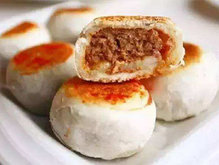 Suzhou-style mooncakes
Suzhou-style mooncakes
Mooncakes from Suzhou are also well-known around China. They are smaller than other mooncakes and might be a bit less appealing to the eye. They have flaky layered dough and are made with a lot of sugar and lard. You can often find them filled with minced pork and many Chinese love them.
So, what is the story behind mooncakes? Since ancient time, the harvest has been celebrated in autumn and especially around the autumn equinox in cultures all around the world. Around 3000 years ago during the Zhou dynasty (1046 – 256 BC), it was common practice to worship the moon and make sacrifices to the moon goddess Chang’e, especially by kings and emperors. From the Tang dynasty (618 – 907) merchants, officials and the wealthy upper class started celebrating the harvest moon and in the late Tang dynasty, the common people joined the celebrations. From the Song dynasty (960 – 1279) it became a fixed holiday on the 15th day of the 8th lunar month. From the Ming dynasty (1368 – 1644) Mid-autumn festival became one of the most important festivals together with Chinese New Year with dragon dances and lighting lanterns being popular activities in certain areas (not Yunnan).
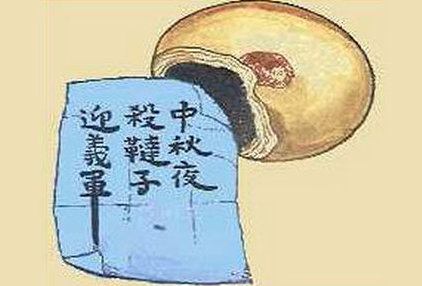
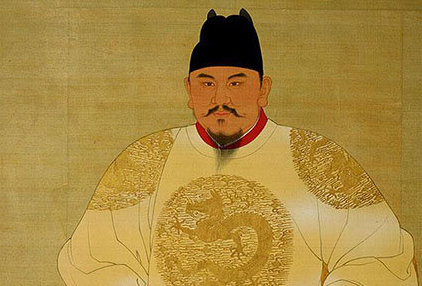
During the Mongolian Yuan dynasty, rebels hid messages in mooncakes, which resulted in Zhu Yuanzhang overthrowing the Mongolian court and establish himself as the new Chinse emperor. The Ming dynasty was born.
Even though already eaten during Mid-autumn festival from the Tang dynasty, it wasn’t until in the Mongol Yuan dynasty (1279 – 1368) that mooncakes became popular. Han Chinese were oppressed and were not allowed to have arms or arrange any gatherings. In an uprising against the Mongolian overlords, rebel leader Zhu Yuanzhang distributed thousands of mooncakes with a hidden piece of paper inside, calling the Chinese to arms on the 15th day of the 8th month. The plan succeeded and it was the end of the Mongolian dynasty and Zhu Yuanzhang became the emperor of the new Ming dynasty. From then on, mooncakes were eaten every year as a tradition to commemorate the uprising. Nowadays, people don’t practice moon worshipping anymore, neither do they actively commemorate the victory against the Mongols anymore. But the mooncakes survived, and instead of a symbol of uprising, the round shape of mooncakes now symbolizes the moon and represents completeness and family reunion.
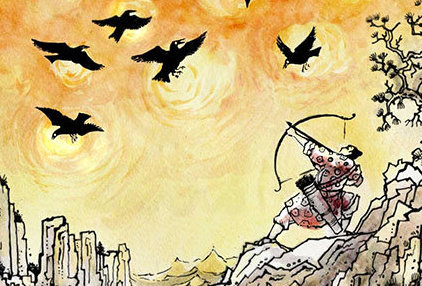
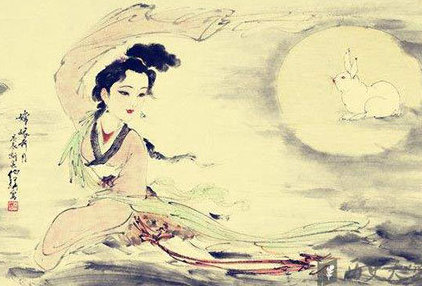
Houyi is either depicted as a fallen immortal who shot the Jade Emperor’s nine sons or as a mortal hero who saved the world from burning under ten suns. The Lady of the moon or the moon goddess Chang’e is celebrated in many Chinese stories and poems for her kindness and beauty, even the Chinese Lunar Exploration Program is named after her as the Chang’e Project.
Now we got our heroic history behind the festival, but a Chinese festival is not complete with an additional romantic legend. The mythical story of Mid-autumn festival originated in the Shang dynasty (1600-1046 BC) and evolves around Chang’e and her husband Houyi. There are different versions, but here’s the one of the more popular ones: Chang’e and the archer Houyi were a married couple of immortals living in heaven. One day, the ten sons of the heavenly Jade Emperor turned into ten suns that scorched earth which made life unbearable for the people and animals living on it. The Jade Emperor called Houyi to stop his sons, and being the best archer in the Heavens, Houyi shot down nine of the ten suns (which in some stories are sun-birds), leaving one to sustain life. This was not what the Jade Emperor had in mind when he asked him to stop his sons and he was so furious, that he banished Houyi and Chang’e to Earth to live as mortals. Chang’e was devastated by being a mortal and Houyi went on a quest to find an immortality elixir. Eventually, he found it, and he gave it to Chang’e to keep. We can all guess what happens next; Chang’e swallowed the elixir. In some versions, she did it out of curiosity and other versions state that she did it to prevent Houyi’s evil apprentice Feng Meng from swallowing it. The result is the same, Chang’e became immortal and had no choice to leave Earth. She chose to reside on the closed place in Heaven to Earth, which is the moon. Only accompanied by a jade rabbit, she could only watch her husband from the moon. Every year during Mid-autumn festival, when the moon is said to be closest to the earth, Houyi would display her favourite fruits and cakes to sacrifice for his wife on the moon. And so, people started to offer mooncakes to Chang’e on the moon and eat them in her honour.
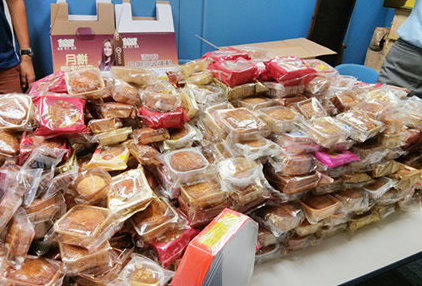
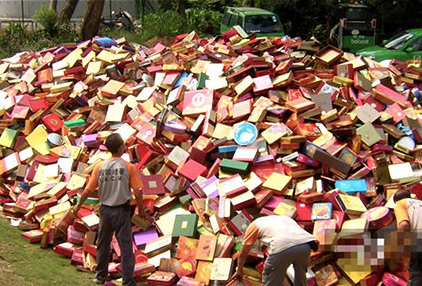
Millions of mooncakes are being dumped each year because people don't like to eat them and they receive too many. Next to that are mooncakes wrapped in too much packaging which leads to piles of extra waste every year.
That is all very romantic and all, but in this modern time, there is a downside about these cakes. Mooncakes are a great gift of appreciation, politeness and wishing-well, but... many people don’t actually like eating them. On top of that, most families receive more mooncakes than they can eat. Mooncakes have become a currency of trade in appreciation and you are almost obliged to buy and gift them, even though you know they will never be eaten and many even end up in the dump. Overpackaging is also a problem (which it is in general in China). Each mooncake lies in a plastic bed, packaged in plastic which is in turn packaged in a small box. A few small boxes are put in another bed of card box, plastic or fabric to create a pretty display in a bigger hard box, in another paper or plastic sleeve, which is then put in a bag. In recent years, the government has started a campaign against mooncake waste and people in China are slowly becoming more aware of the overpackaging problem.
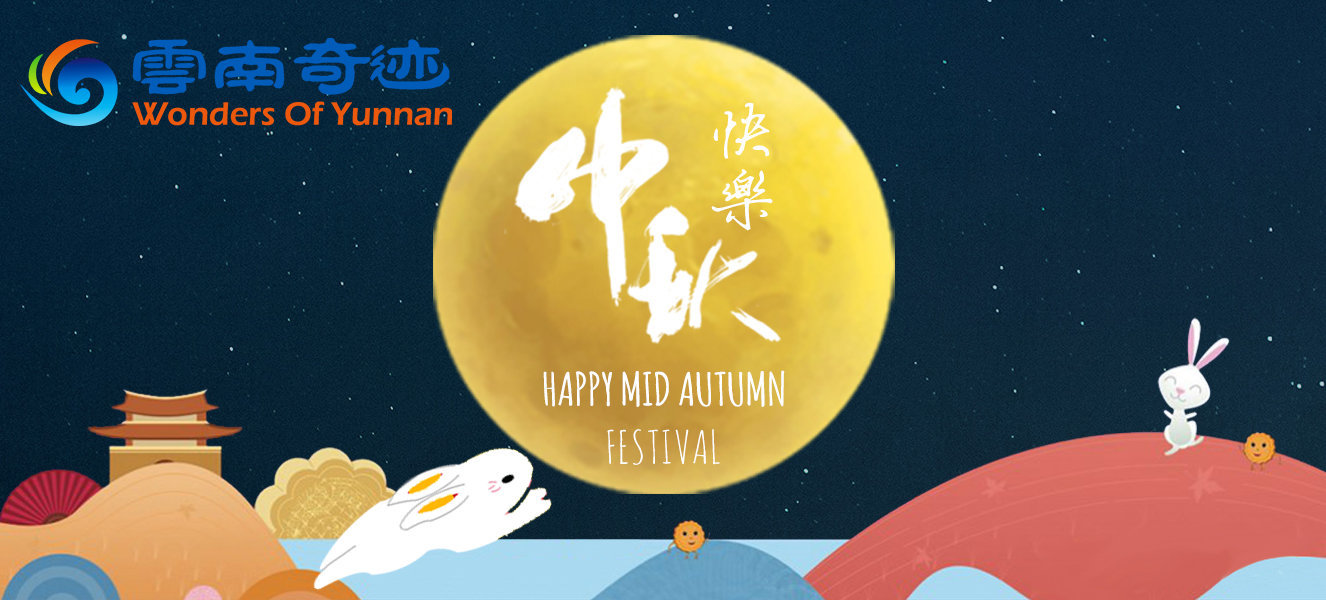
But, it will not stop me from eating my small share of mooncakes this year! The history and stories behind Mid Autumn Festival and the mooncakes are very intriguing, and if everyone buys and gift mooncakes in moderation, we can prevent them from being thrown away. Us expats might not have any family to spend this holiday with here, but Chinese friends invite me every year to spend national holidays with their family. Mid-Autumn Festival is about thanksgiving, completeness and spending time with family, and guests and friends are always warmly welcomed in Chinese families. I hope travellers during this time will receive the same welcome and will get a small taste of this special time in Chinese culture!
We wish everyone a happy Mid-Autumn Festival 2019!
Further Reading: The Mid-Autumn Festival
- 786 reads
- Like this






